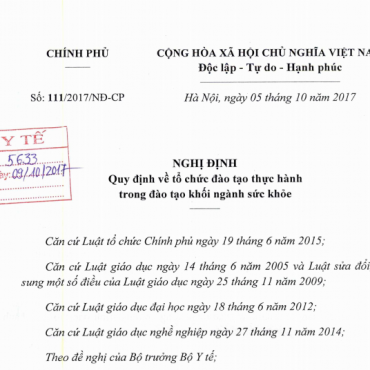Contact Admission
International Collaboration
MONITORING SIDE EFFECTS OF COVID VACCINES AND REPORTING AES

Since the vaccine development was rushed through the clinical phases, there is limited information available regarding the adverse effects of the Covid-19 vaccines. With time and more diverse population getting vaccinated on daily basis, newer side effects associated with the administration of these vaccines are coming into picture.1-4
Insights into the side effects of the covid vaccines1-4
- So far, the most common side effect of the vaccine is pain at the injection site, specifically in the initial 12 to 24 hours post administration.
- Approximately 1% of the population has graded this pain to be “Severe” in nature.
- Fever, headache, irritability and fatigue are the other common side effects of the Covid-19 vaccines.
- These effects generally resolve in the initial couple of days.
- In maximum cases, these effects are responsive to acetaminophen or a non-steroidal anti-inflammatory drug.
- Another noticeable feature was that the side effects were more commonly observed in younger vaccine recipients than older recipients.
- Secondly, the side effects were more intense in the second shot than first, although people with history of Covid-19 experience more side effects with the first vaccine.
Side effects of Moderna vaccine
- In some cases, Moderna vaccine is reported to trigger a rash with onset several days after administration, usually at the site of immunization; median onset is approximately 1 week after administration.
- The rash is treatable with topical corticosteroids.
- Additionally, some cases of myocarditis and pericarditis have been reported usually within 1 week of vaccination.
Side effects of J&J vaccines
- Some reports have shown that the J&J vaccine may lead to thrombosis and thrombocytopenia syndrome (TTS).
- The most common sites of clotting are in the cerebral venous sinuses, with other anatomic sites also involved.
- In most cases, the clotting occurred 3 weeks post vaccine administration.
- Hence, CDC has recommended that medical attention needs to be raised if anyone experiences any of the following symptoms within first 3 weeks of vaccination:
- Severe or persistent headaches or blurred vision
- Shortness of breath
- Chest pain
- Leg swelling
- Persistent abdominal pain
- Easy bruising or tiny blood spots under the skin beyond the injection site
- The J&J vaccine has also been reported to be triggering Guillian-Barré syndrome especially in older males in some rare cases.
Side effects of Covishield
- Tenderness, pain, warmth, or itching where the injection is given are very commonly reported.
- Generally feeling unwell, feeling tired (fatigue), chills or feeling feverish, headache, feeling sick (nausea), joint pain or muscle ache are also reported as common side effects.
- Some people may also have swelling at the site of administration, fever, vomiting or diarrhoea, pain in legs or arms, flu-like symptoms such as high fever, sore throat, runny nose, cough and chills.
- Sleepiness or feeling dizzy, abdominal pain, enlarged lymph nodes, excessive sweating, itchy skin, rash or hives are few uncommon side effects.
- Rare cases of anaphylaxis, severe swelling of lips, mouth, and throat causing difficulty or breathing have also been reported.
- Major blood clotting in combination with low platelet count (thrombocytopenia) have been observed very rarely (with a frequency less than 1 in 100,000 vaccinated individuals)
Reporting of adverse events1-4
According to definition of the FDA, following events should be considered as severe adverse events:
- Death
- A life-threatening adverse event
- Inpatient hospitalization or prolongation of existing hospitalization
- A persistent or significant incapacity or substantial disruption of normal life functions
- A congenital anomaly or birth defect
- An important medical event that (on the basis of appropriate medical judgment) may jeopardize the person and may require medical or surgical intervention to prevent one of the outcomes listed above
- Multisystem inflammatory syndrome
- Cases of Covid-19 that result in hospitalization or death
- Therefore, such incidences must be immediately reported by the attending clinicians
- Additionally, post-vaccination multisystem inflammatory syndrome and cases of Covid-19 resulting in hospitalization or death should also be promptly reported.
Where to report the adverse events1,5
- Clinicians are recommended to reported any of such severe adverse events through the Vaccine Adverse Event Reporting System (VAERS).
- The VAERS is designed as a passive reporting systems which collects information from healthcare professionals, vaccine manufacturers, and the public regarding any adverse events that may happen after vaccination.
- Similarly, any reported unexpected adverse events, events happening at unusual frequency or having unusual patterns need to be reported in the VAERS.
- The VAERS is designed to rapidly detect and report unusual or unexpected patterns of adverse events, also known as “safety signals.”
- The major strength of VAERS is being accessible in general scope, it is capable of quickly providing early warning of a safety problem with any vaccine.
Conclusion
Recent developments in the Covid-19 vaccines have led to wide-scale monitoring of any kind of unusual adverse events happening after administration. The healthcare providers should report to VAERS any clinically significant adverse events post vaccination, even if they are unsure if the vaccine is related to the vaccination. Furthermore, some cases of delayed reactions have also emerged in past couple of months. Hence, to broaden the available safety data of these Covid-19 vaccines, both clinicians as well as the general public are encouraged to report their issues promptly to their health care authorities or VAERS.
Key message
- Fever, arm pain and fatigue are commonly reported side-effects of the Covid-19 vaccine.
- Clinicians should report severe adverse effects through the Vaccine Adverse Event Reporting System (VAERS).
References:
- Sax PE. Covid-19 Vaccine-Frequently Asked Questions. Retrieved from https://www.nejm.org/covid-vaccine/faq. Accessed on 31.8.2021.
- Riad A, Pokorná A, Attia S, Klugarová J, Koščík M, Klugar M. Prevalence of COVID-19 Vaccine Side Effects among Healthcare Workers in the Czech Republic. Journal of Clinical Medicine. 2021 Jan;10(7):1428.
- Possible Side Effects. Centers for Disease control and prevention. Retrieved from https://www.cdc.gov/coronavirus/2019-ncov/vaccines/expect/after.html. Accessed on 31.8.2021.
- Shimabukuro T. COVID-19 vaccine safety update. National Center for Immunization and Respiratory diseases. Retrived from https://www.cdc.gov/vaccines/acip/meetings/downloads/slides-2021-01/06-COVID-Shimabukuro.pdf. Accessed on 31.8.2021.
- Rizk JG, Barr CE, Rizk Y, Lewin JC. The next frontier in vaccine safety and VAERS: Lessons from COVID-19 and ten recommendations for action. Vaccine. 2021 Aug 10.
Other library
- One in 10 People Who Had Omicron Got Long COVID: Study ( 20:25 - 01/06/2023 )
- Physical Medicine Academy Issues Guidance on Long COVID Neurologic Symptoms ( 09:58 - 19/05/2023 )
- Breakthrough' Study: Diabetes Drug Helps Prevent Long COVID ( 08:55 - 15/03/2023 )
- BCG vaccine (thuốc chủng ngừa bệnh lao) & SARS-CoV 2 (covid-19) infection ( 10:08 - 27/10/2022 )
- Đại dịch COVID-19 đã kết thúc? ( 09:11 - 22/09/2022 )
- Dị hình giới tính ở COVID-19: Ý nghĩa tiềm năng về lâm sàng và sức khỏe cộng đồng ( 09:22 - 19/03/2022 )
- COVID-19 Update ( 21:00 - 06/03/2022 )
- Một người có thể tái mắc Covid-19 bao nhiêu lần ?? / kèm 6 tài liệu mới ... do "waning immunity", xảy ra ≥6 tháng sau chủng ngừa hay mắc nhiễm .. ( 20:25 - 06/03/2022 )
- T-cells from common colds can provide protection against COVID-19 - study ( 08:25 - 11/01/2022 )
- Coronavirus Can Spread to Heart, Brain Days After Infection ( 07:56 - 30/12/2021 )
















